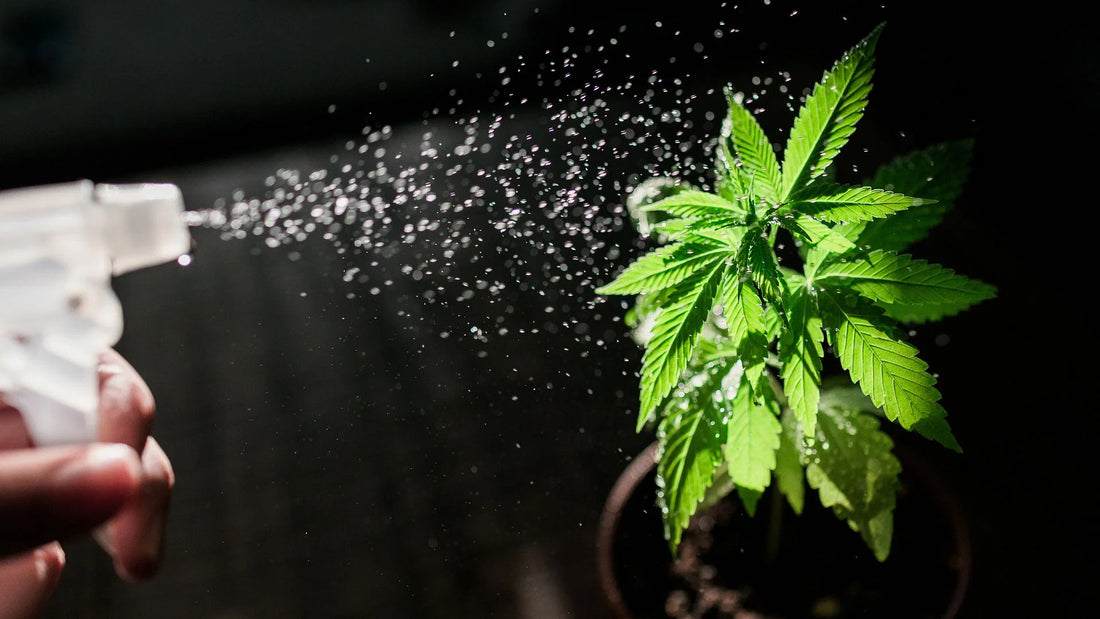
When And Why, You Should Foliar Your Cannabis Plants
Share
As cannabis growers seek to maximize their yields and enhance plant health, various techniques and methods are employed to ensure optimal growth. One such technique is foliar feeding, which involves applying nutrients directly to the leaves of the cannabis plant.In addition to foliar feeding, spraying for integrated pest management (IPM) is another crucial aspect of cannabis cultivation. Let's delve into the differences between these techniques and explore how they can be combined under different circumstances.
Foliar Feeding
Foliar feeding is a process by which essential nutrients are absorbed through the leaves of a plant. While the primary method of nutrient uptake for cannabis plants is through the root system, foliar feeding provides a supplemental means of nutrient delivery. This technique is instrumental when plants are experiencing nutrient deficiencies or when a quick nutrient boost is required. Additionally, foliar feeding is beneficial when a plant's root system is compromised, such as during transplant shock or when dealing with root diseases.
Foliar feeding has been a subject of ongoing debate in recent years. Proponents of foliar feeding claim that it can enhance the nutritional status of plants and lead to significant yield increases. This belief stems from early research conducted at Michigan State University in the 1950s, which demonstrated that leaves might be more efficient at nutrient uptake than roots.
However, opponents of foliar feeding argue that leaves are not designed for nutrient absorption; that is, the role of roots. It is estimated that only a fraction, approximately 15 to 20 per cent, of the nutrients applied to leaves are taken in. Moreover, the translocation of nutrients to other parts of the plant is less efficient when nutrients are absorbed through leaves compared to root uptake.
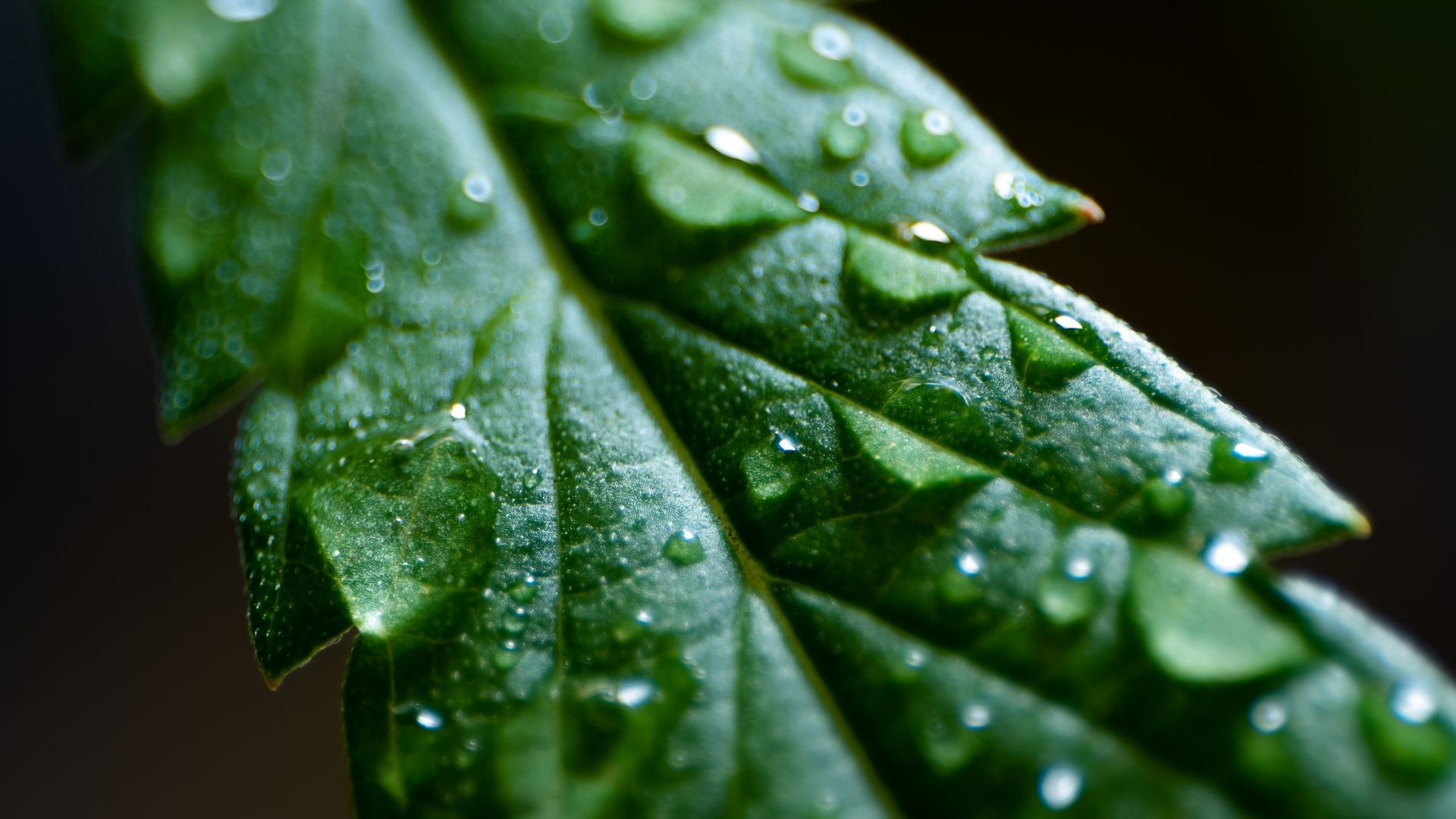
The entry mechanism of essential elements into leaves during foliar feeding is still debated. Conventional theory suggests that nutrient absorption occurs through the stomata, microscopic openings on the leaf surface. These stomata serve as entry points for air containing carbon dioxide, used by the plant during photosynthesis. However, recent research suggests that nutrients are more likely to be absorbed through the leaf cuticle, a protective layer on the leaf surface. The cuticle contains microscopic pores with negative charges, which attract positively charged elements like calcium, magnesium, potassium, and ammonium-form nitrogen.
Conversely, negatively charged elements in ionic form, such as phosphorus, sulfur, and nitrate-form nitrogen, face more challenges entering the leaf through the cuticle. This is because like-charges repel each other. Furthermore, once inside the leaf, the fate of the nutrients varies. Smaller molecules and ions with lesser positive charges, such as ammonium, potassium, and urea, can be readily transported through the vascular system and distributed to other plant parts. In contrast, larger molecules and ions with more significant positive charges remain near their entry point, adhering to the negatively charged cell walls.
To increase your plants' uptake of nutrients via foliar feeding, it is best to use fulvic acid to help deliver the nutrients more efficiently. Fulvic acid acts as a magnet for many trace minerals, and due to its small molecular size, it can fit in the plant's stomata compared to humic acid, which is too large and should be used in root drenches.
A basic recipe for foliar feeding is:
- 1-2 tsp per gallon - Silica 1-2 tsp per gallon – Water Soluble Fulvic
- 1 tsp per gallon - Water Soluble Kelp Extract
- ¼ tsp per gallon – 100X Aloe Extract
- 1 tbsp per gallon – Wettable Sulfur
- 1/16 tsp per gallon - Yucca Root Extract
Emulsify silica in a small amount of water before adding it to the sprayer tank. Mix all ingredients into the reservoir, mixing thoroughly between each addition, adding yucca last.
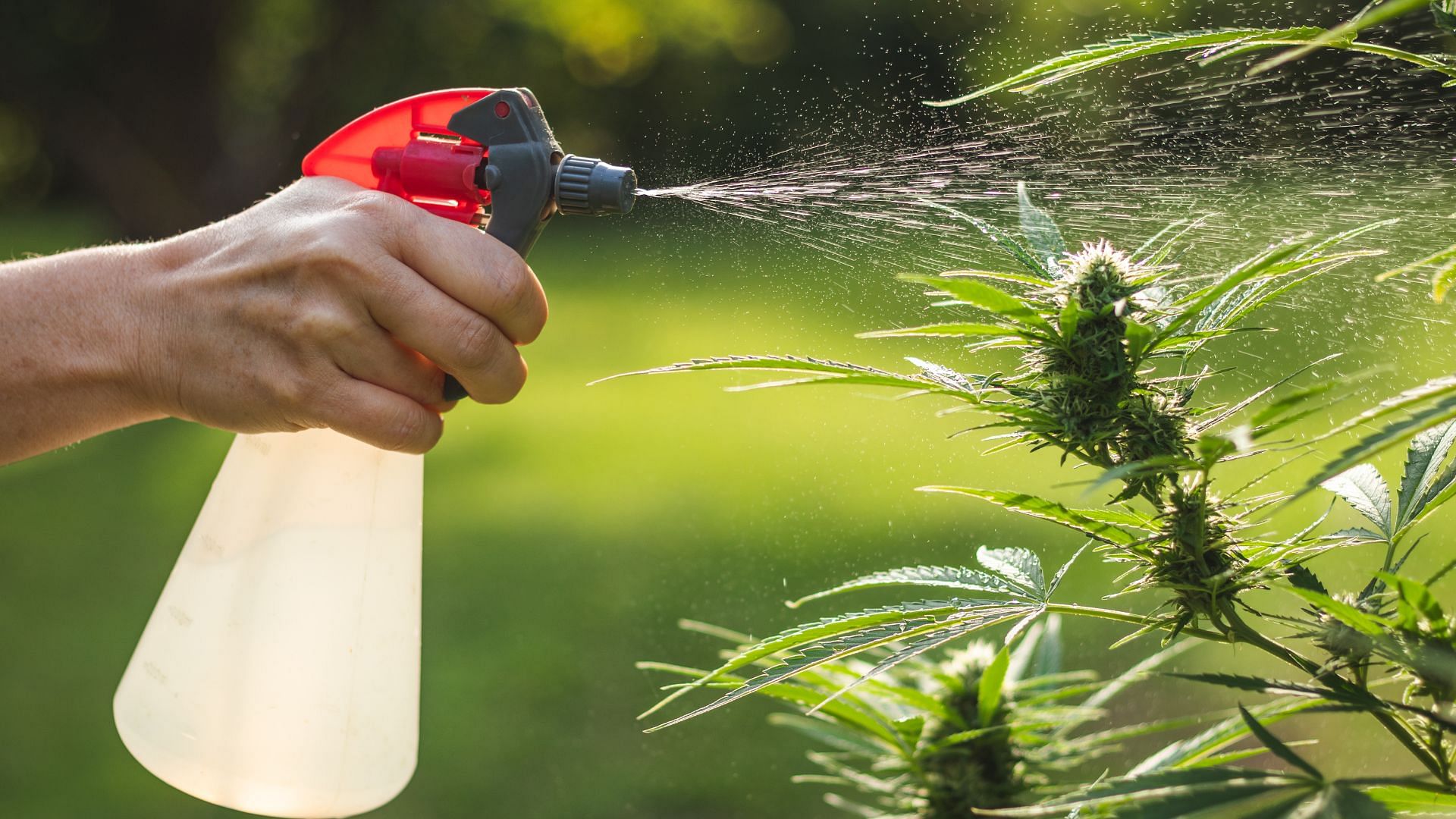
When it comes to foliar feeding, there are several types of equipment commonly used: foggers, backpack sprayers, and handheld sprayers.
Foggers: produce a fine mist of liquid droplets. They create a dense fog that can effectively cover the foliage, ensuring thorough nutrient application. Foggers are ideal for large-scale operations or when treating many plants. They provide excellent coverage and can reach high and dense canopies, ensuring even distribution of nutrients or sprays. However, foggers tend to use a larger volume of liquid, and the fine droplets can take longer to settle on the leaves, potentially leading to run-off or wastage.
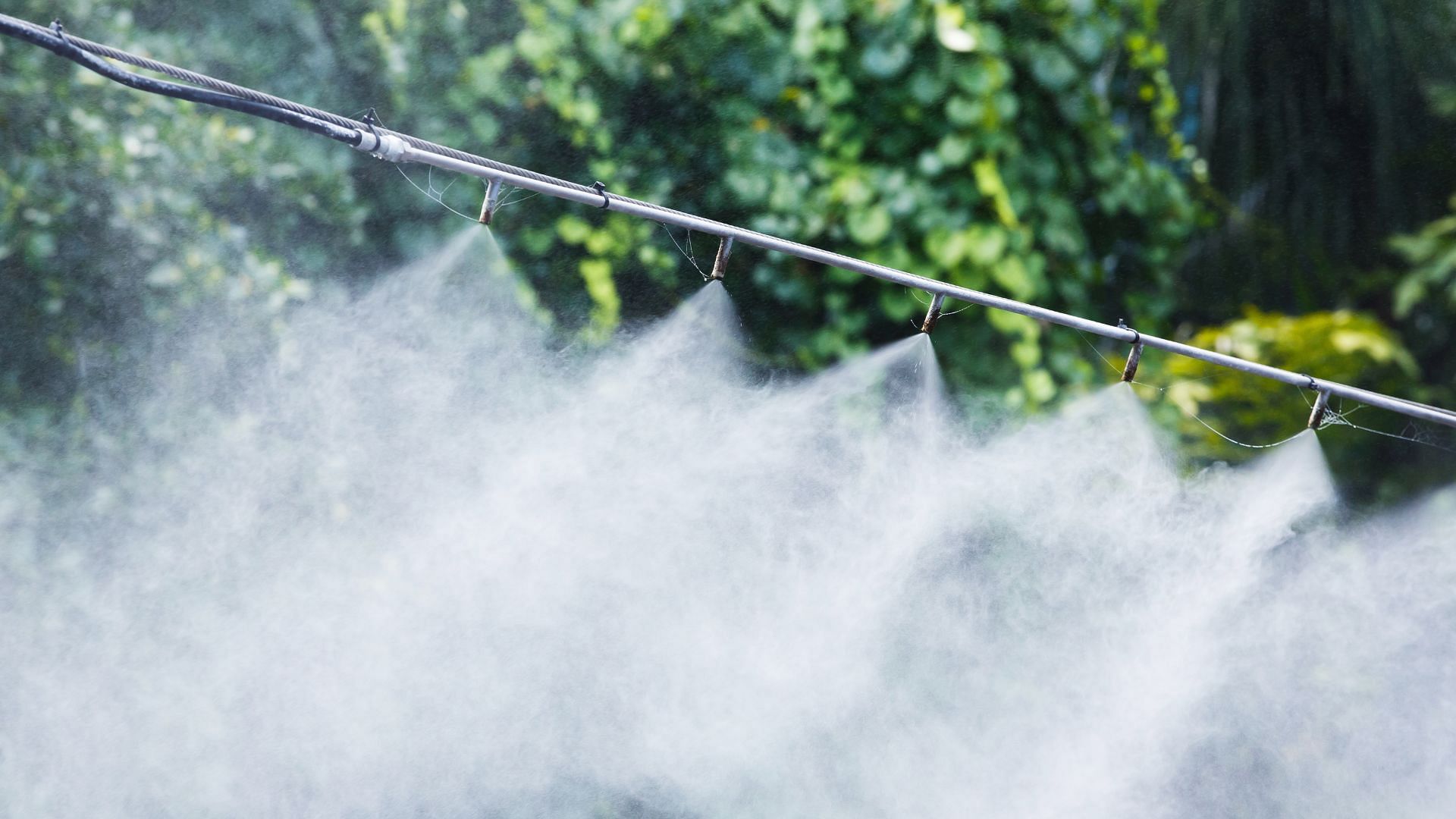
Backpack sprayers: consist of a tank worn on the operator's back, equipped with a wand and nozzle for spraying. These sprayers offer versatility and mobility, making them suitable for small and medium-sized gardens. They allow for precise targeting of specific areas or individual plants. Backpack sprayers are more efficient regarding liquid consumption than foggers, as the spray is directly applied to the foliage. They are also easier to handle and navigate in tight spaces. However, their reach may be limited when dealing with tall or densely canopied plants.
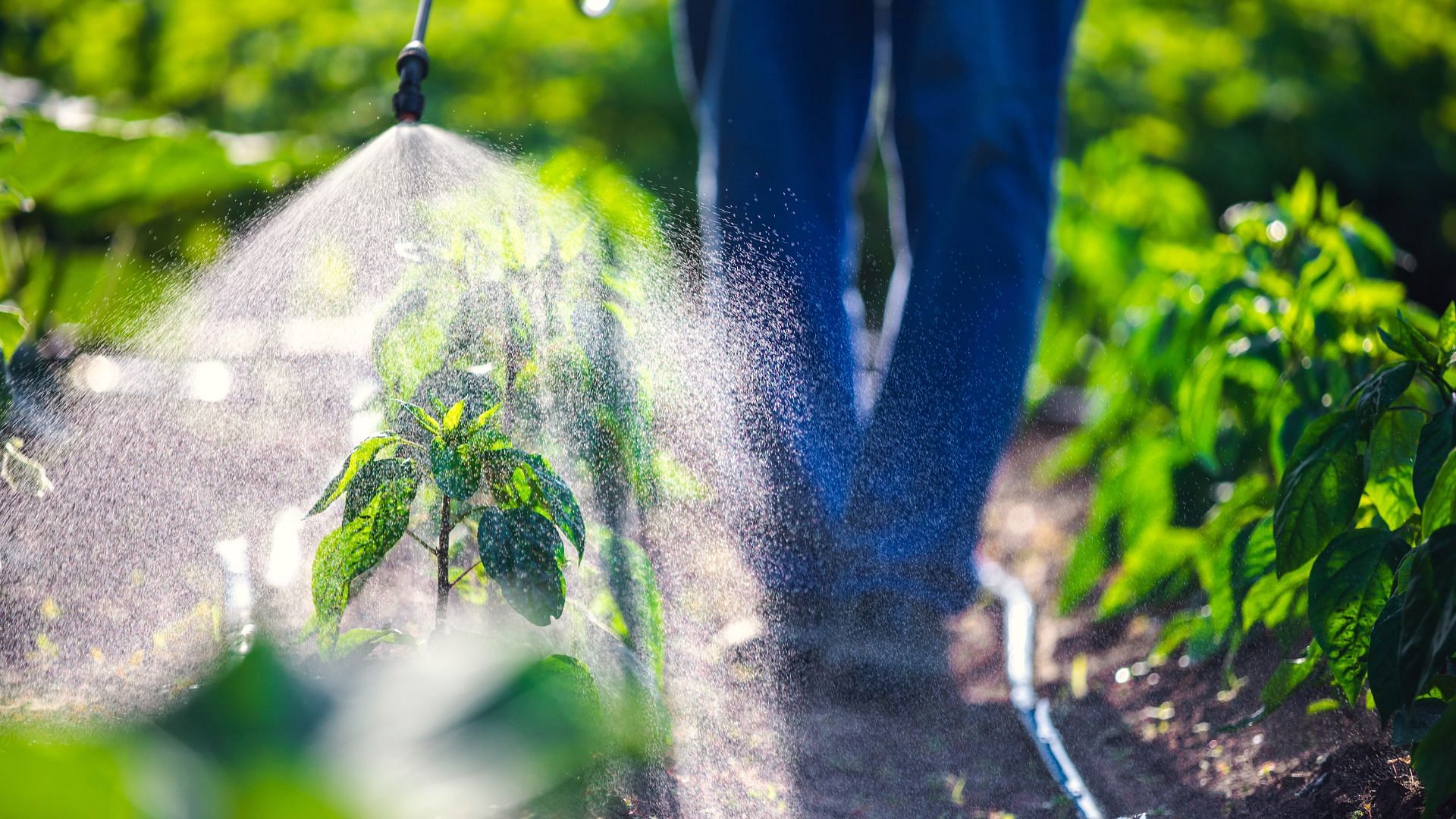
Handheld sprayers: are more petite, portable devices operated by hand. They are handy for small-scale or home gardens. Handheld sprayers offer convenience and ease of use, allowing growers to precisely target specific plants or areas. They are suitable for spot treatments and can reach plants at various heights. However, handheld sprayers have limited capacity and may require frequent refilling for more extensive gardens.
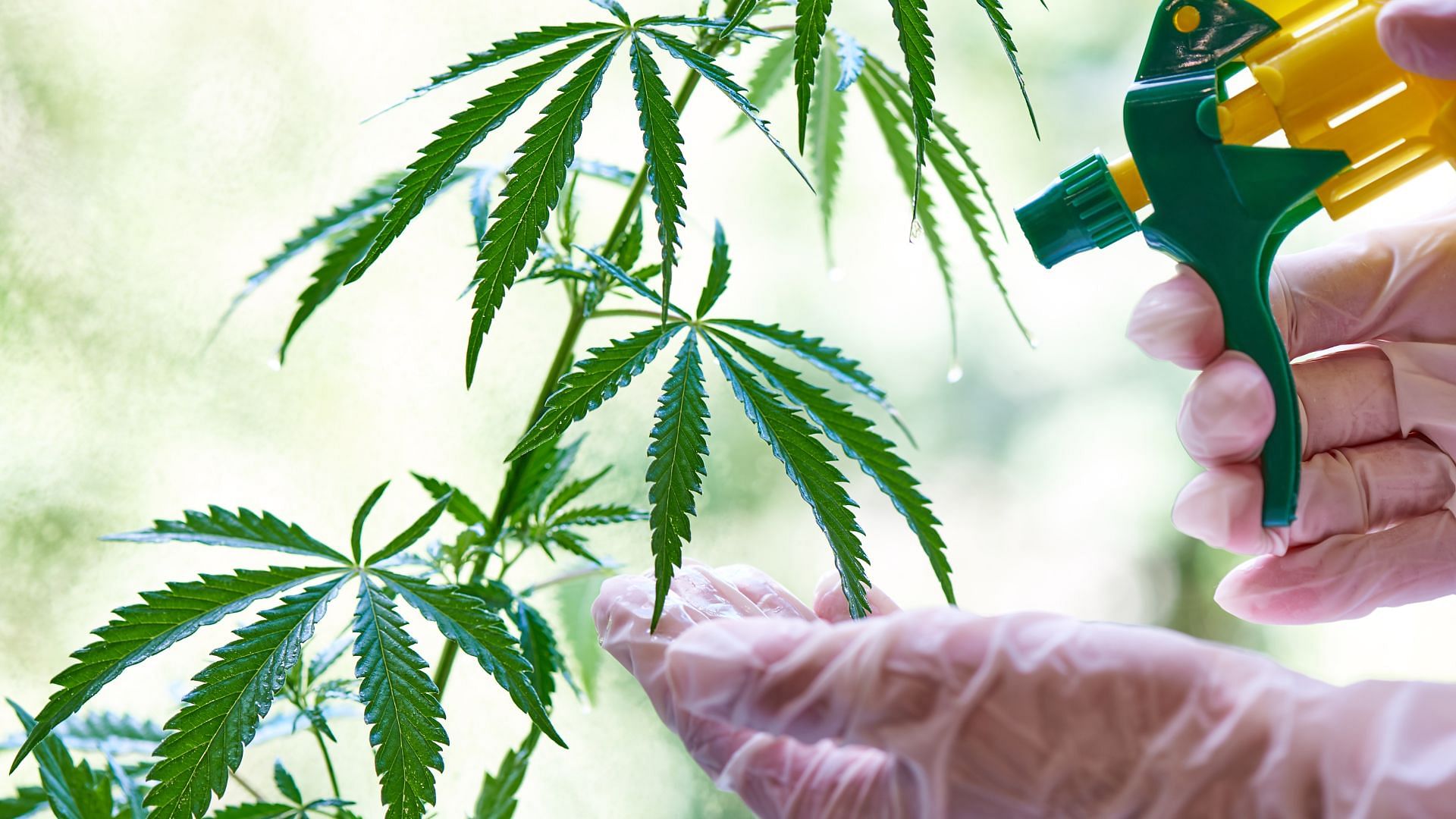
Spraying For IPM
Spraying for integrated pest management is vital to maintaining a healthy cannabis crop. IPM involves using preventative measures and targeted treatments to control pests and diseases without relying solely on harmful chemicals. Spraying for IPM typically involves using organic and natural solutions to combat pests and diseases, minimizing the risk of toxic buildup in the plant and the surrounding environment. Regular spraying can prevent pest infestations and diseases from taking hold and spreading throughout the garden.
When spraying for IPM, it's essential to identify the pests or diseases affecting your cannabis plants and choose appropriate organic solutions for treatment. Some standard organic options for IPM spraying include neem oil, insecticidal soap, and entomopathogenic fungi and bacteria. These solutions can be mixed according to the product instructions and sprayed on the plants, focusing on the areas most affected by pests or diseases. Regular monitoring of the plants is essential to catch any issues early and take prompt action.
A basic recipe for IPM spraying that can be used throughout your plant's life cycle is:
2 tsp per gallon - Unscented Castille Soap
1/4 cup per gallon – 70% isopropyl alcohol
1-2 ounces per gallon – Monterey Horticultural Oil
Soapy water with alcohol is a safe and effective spray for soft-bodied insects like thrips, aphids, and spider mites. While it may not eradicate them, it will help reduce their numbers while alternating more potent sprays such as neem oil, Beauveria bassiana, and other entomopathogenic microorganisms.
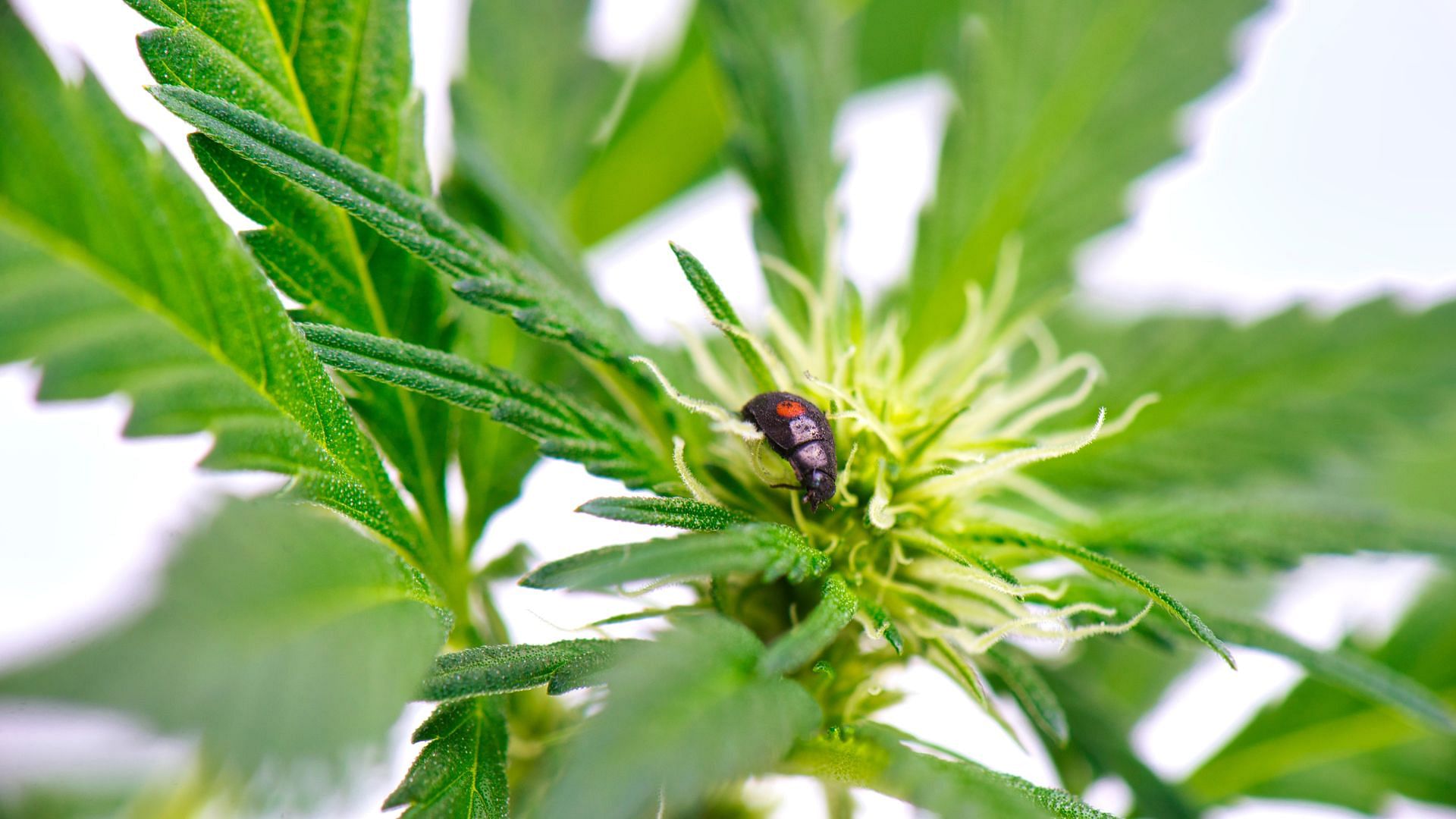
What Are Entomopathogenic Fungi?
Entomopathogenic microorganisms refer to a diverse group of microbes that can infect and cause diseases in insects. The prefix "entomo" derives from the Greek word for insects, while "pathogenic" indicates their capacity to cause harm or disease. This group includes various microorganisms, including fungi, bacteria, nematodes, and viruses, which possess specialized mechanisms to invade and exploit insect hosts. These entomopathogens play a significant role in natural ecosystems by regulating insect populations. Each type of entomopathogenic microbe possesses unique characteristics and strategies for infecting and controlling insect pests, providing a diverse toolbox for sustainable and environmentally friendly pest control solutions.
Entomopathogenic microorganisms have emerged as promising tools for foliar applications in pest management. One common application involves using entomopathogenic fungi, such as Beauveria bassiana and Metarhizium anisopliae. These fungi are formulated into biopesticides that can be sprayed directly onto plant foliage. When insects encounter the treated leaves, the fungal spores adhere to their cuticles, infecting and killing the pests.
Another popular foliar application involves entomopathogenic bacteria, particularly Bacillus thuringiensis (Bt). After ingestion, bt-based biopesticides are applied as sprays to control specific pest larvae, including caterpillars and mosquito larvae. The bacteria release toxins inside the insect's gut, leading to paralysis, disruption of feeding, and eventual death. These foliar applications of entomopathogenic microorganisms provide effective and environmentally friendly alternatives to chemical insecticides, contributing to integrated pest management strategies and sustainable agricultural practices. To learn more about Integrated Pest Management practices to effectively control pests and pathogens in your garden in a safe and sustainable way, check out this class.
Conclusion
While foliar feeding and spraying for IPM are valuable techniques, it's essential to exercise caution and avoid overuse. Excessive foliar feeding or spraying can lead to nutrient burn, damage to leaves, and hinder the plant's natural growth processes. Always follow product instructions, use recommended dilutions, and adhere to the appropriate frequency of application.
Foliar feeding and spraying for IPM are valuable tools in the cannabis cultivator's arsenal. They provide a means to supplement plant nutrition, address nutrient deficiencies, combat pests, and prevent diseases. By understanding the differences between these techniques and applying them at the correct growth stages, cannabis growers can promote healthy and robust plants, ultimately leading to improved yields and quality harvests.

